One of the three classes I am teaching in Munich is Advanced Typography.
The students are in their third year in the Print Media program at Munich University of Applied Sciences. Five of my students are exchange students from my home university, Cal Poly.
At Cal Poly I have access to the Shakespeare Press Museum, a delightful collection of 19th and early 20th century letterpress equipment and type. When I teach this course at Cal Poly we just walk down the stairs to the museum so that I can show the students how to set type and print with the letterpress equipment in the museum. At Munich there is no museum, and only one letterpress.
My colleague Martin Delp, who spent last spring quarter teaching at Cal Poly, suggested that when I wanted to teach the students about letterpress printing, we should visit his friend Oskar Bernhard, a letterpress printer in the town of Nördlingen, Germany. That town, which was founded in the early 14th century, is about two hours from Munich by train.
Oskar Bernhard explains the marks on a letterpress proof for my Advanced Typography students. From left to right: Emily Hoehenrieder, Shauna Rinaldi-El Abd and Christine Wiechers.
Last Thursday, my students joined Prof. Delp and me at the Munich central train station and we boarded a train headed for Nördlingen. When we arrived in that city, we walked over to Herr Bernhard’s atelier and began a most impressive day in a working letterpress shop.
This is a look from the balcony of Oskar’s workshop. On the left is his offset proofer. At center is the Heidelberg K-series cylinder press. At the lower-right is his Heidelberg “Tiegel” press. The students are gathered at the back of the shop setting type for their projects.
Bernhard, a veteran of the typographic industry, has an impressive collection of machines – several letterpress proofers, one Heidelberg “Tiegel” (in America these are called the “Windmill”), a large Heidelberg cylinder press, and a very large offset proofing press. He uses these machines to produce limited edition letterpress books, specialty cards and booklets, and a variety of commercial jobs.
Shauna Rinaldi El-Abd and Ashley Boehmer, both Cal Poly students in the exchange program at Munich, operate the letterpress proofer in Mr. Bernhard’s shop. They are positioning a sheet of paper to be printed on the press.
He has a Monotype machine – a typecasting machine from about the 1950s. The keyboard is still in working condition, but his caster is in need of repair. The rest of his type is foundry type and some wood type in sizes up to about three inches. It’s a beautiful shop, very neat and orderly. And, unlike many letterpress shops, there are not very many orphaned projects sitting on the counters. He is meticulous about putting type away.
The students learned how to use a composing stick, how to add (real) leading to increase the space between lines, and how to quad-out their lines to properly center them. They chose their type from the many drawers of hand-set type in Mr. Bernhard’s collection. He was most gracious in allowing the students to invade his workshop and use his precious equipment.
With Oskar Bernhard’s historic building in the background, my students gather for a group photo in Nördlingen. In back are me, Franz Eder, Martin Hämmerle, Christine Wiechers and Oskar Bernhard. Second row: Antonia Schaefer, Jessica Dimulias, Skyler Ulep, Front row: Sophie Wegenknecht, Ashley Boehmer, Shauna Rinaldi El-Abd, Emily Hoehenrieder and Prof. Martin Delp. Photo by Ashala Lawler
It was fun and highly educational. Each student had a chance to set type, to position it on the press and to print several sheets of finished work on Mr. Bernhard’s proofing press. They had an experience that one cannot get in a textbook, nor from a PowerPoint presentation.
After our day in Oskar Bernhard’s workshop, we had a pizza, then took a guided tour of the town, the only city in Germany that still features a wall around the city to keep marauders out. At the end of the day, we sent the students back to Munich on the train, and we stayed behind for a nice dinner and a second day in the historic city.
At Cal Poly we have the motto “Learn By Doing.” One of the reasons that Munich’s program is such a good fit for our exchange program is that its system is also based on hands-on learning. With our visit to Nördlingen and to Oskar Bernhard’s workshop, the students had a worthwhile learn-by-doing experience that they will long remember.
Note added May 10, 2017:
My students and I created a thank you poster to send to Herr Bernhard. We included hand lettering by Sophie Wagenknecht and a translated version of This is a Printing Office by Beatrice Ward. Each student signed the poster and we mailed it to Oskar Bernhard.


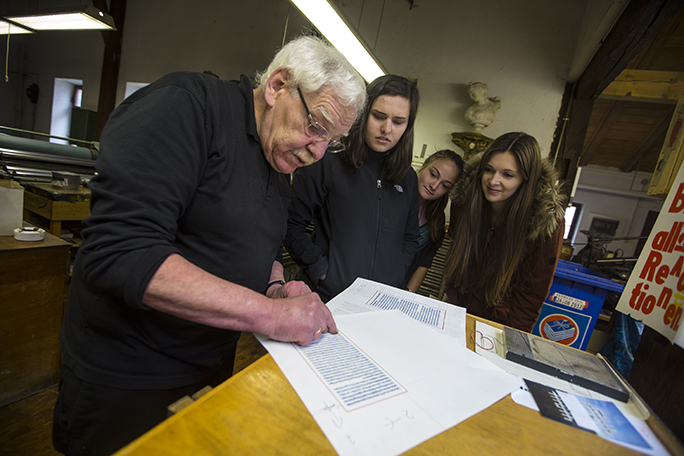
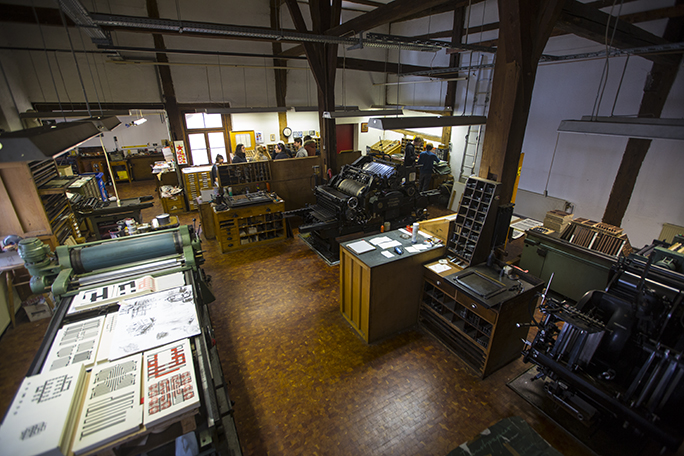
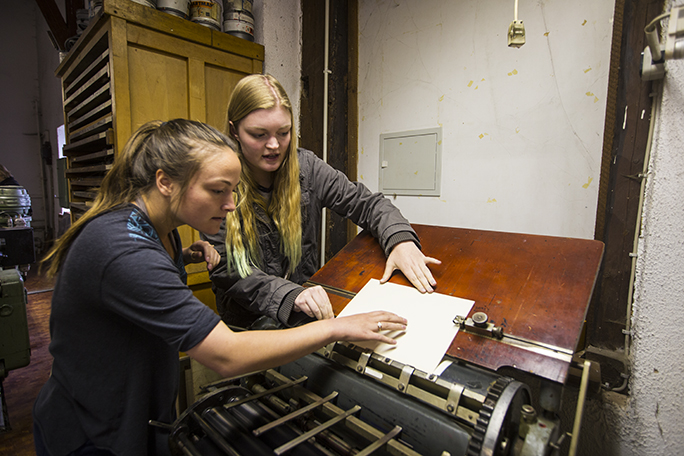
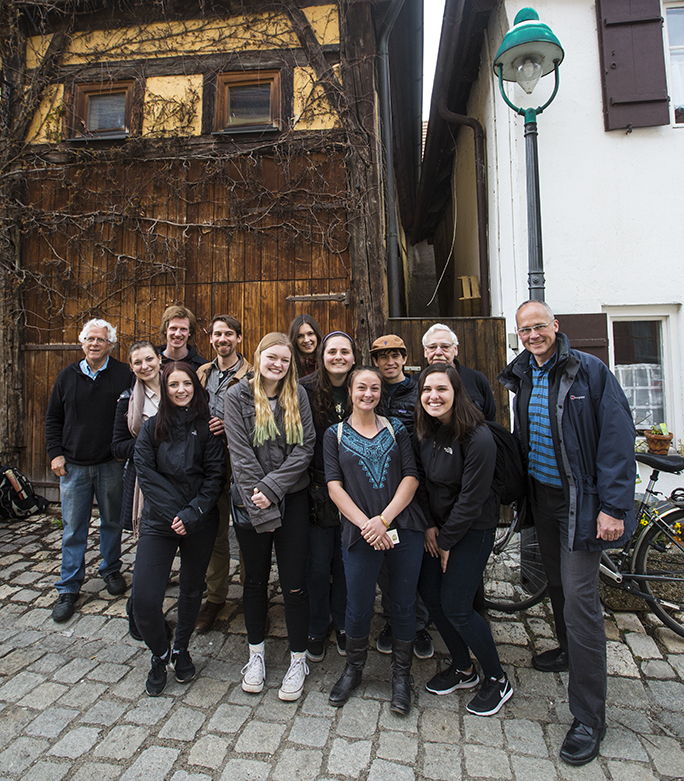
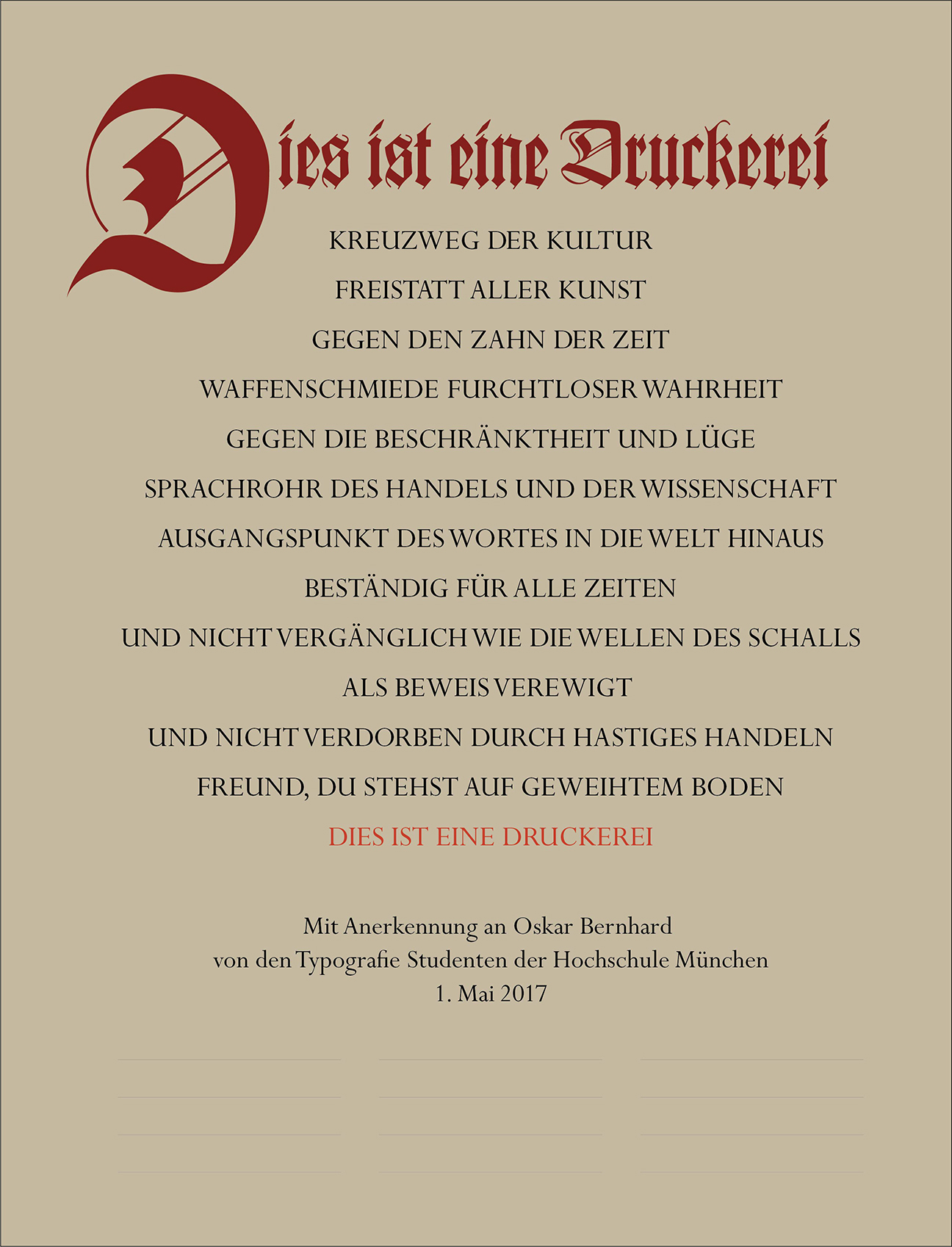
Mr. Bernhard is indeed kind to let his workshop be invaded by students. It sounds like a great experience.